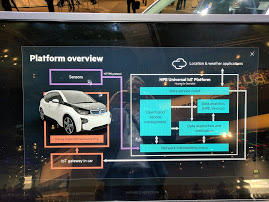Hewlett Packard Enterprise (HPE) has become the latest tech giant to jump on the digital transformation gravy train, as it crafts a strategy to help enterprises cope with disruption from emerging technology.
At HPE Discover 2016 in London, the enterprise arm of the once behemoth-like HP, which has shed more of its business units after the split of HP into two separate companies last year, revealed a strategy that embraces the doctrine of digital transformation.
“We are living through the birth of a new world; a world where everything computes,” Meg Whitman, HPE’s chief executive enthused in the conference keynote, championing how more digital data, cloud services, the rise of the Internet of Things (IoT) is increasing forcing companies to overhaul or evolve their IT.
No surprises
![]() Of course, HPE is by no means the first tech giant to have such an epiphany; for the past couple of years most keynotes at such tech conferences have been filled with tired references to the disruptive power of Uber ‘the taxi company with not taxis’. And while the likes of Microsoft spearheaded the missive, other have hopped on board, including Fujitsu and Dell EMC.
Of course, HPE is by no means the first tech giant to have such an epiphany; for the past couple of years most keynotes at such tech conferences have been filled with tired references to the disruptive power of Uber ‘the taxi company with not taxis’. And while the likes of Microsoft spearheaded the missive, other have hopped on board, including Fujitsu and Dell EMC.
But each firm has a slightly different take on the oil that will lubricate the engine of digital transformation; Microsoft envisions integrated, cloud-powered software suites, IBM sees cognitive computing and artificial intelligence and Fujitsu sees the coming together of disparate hardware and service silos as the means to cope with tech disruption.
As the dust settles from the crowds and furore of the conference it has become clear that HPE is chasing hybrid IT; the idea of mixing on premise IT infrastructure with cloud services either public, private or both and making smart use of the data that flows across such networks.
“At HPE we’ll see a shift of workloads to cloud models and hybrid fueling the emergence of software-defined architectures and supporting new ways to easily purchase and consume IT services,” said Whitman.
With software-defined architecture being championed as a means to adjust to digital disruption, one could argue that HPE made a strange move offloading a lot of its software division to Micro Focus.
But Whitman pointed out that HPE is simply using the move to re-adjust the sights of its work in the software world embracing more of a software-as-a-service model with a focus on rehouse management and data analytics.
“I also want to be very clear that we are actually not getting out of the software business, in fact we are doubling down on the software capabilities that power and differentiate our infrastructure [services and products] that are critical in a hybrid IT environment,” she said.
“Traditional IT budgets don’t usually support transformation and we can help you move to consumption based pricing models that increase the capacity to invest in transformation.
“I want to be very clear that services are more critical than ever at HPE; you need a partner who can help you manage through changes and complexity at high speed.”
“We’re investing heavily across a range of use cases, architectures and partnerships with deep engineering to help turn your data into better decisions for your business,” she added
Making it work
![]() “Traditional IT, infrastructure and operations simply were not built for this new set of demands; the complexity in increasing every single day, this is today’s reality of hybrid IT,” said Antonio Neri, EVP and general manager of the enterprise group at HPE.
“Traditional IT, infrastructure and operations simply were not built for this new set of demands; the complexity in increasing every single day, this is today’s reality of hybrid IT,” said Antonio Neri, EVP and general manager of the enterprise group at HPE.
And that message was echoed by HPE partner Microsoft by its EVP of cloud and enterprise, Scott Guthrie.
“Managing on-premise, private clouds, public cloud applications and infrastructure today is just too complicated; there are too many different tools that don’t talk together that make it difficult to see the new collective managed hyper environment,” he said.
So if hybrid IT is the future yet difficult to operate, things do not look to promising for HPE and Microsoft. But both firms have their solutions to the problem.
On stage together Neri and Guthrie touted the work both firms did in partnership to mix Microsoft’s Operations Management Suite HPE’s OneView user interface to give IT operators a means to manage HPE hyper-converged infrastructure with Microsoft’s Azure cloud services in a single environment.





